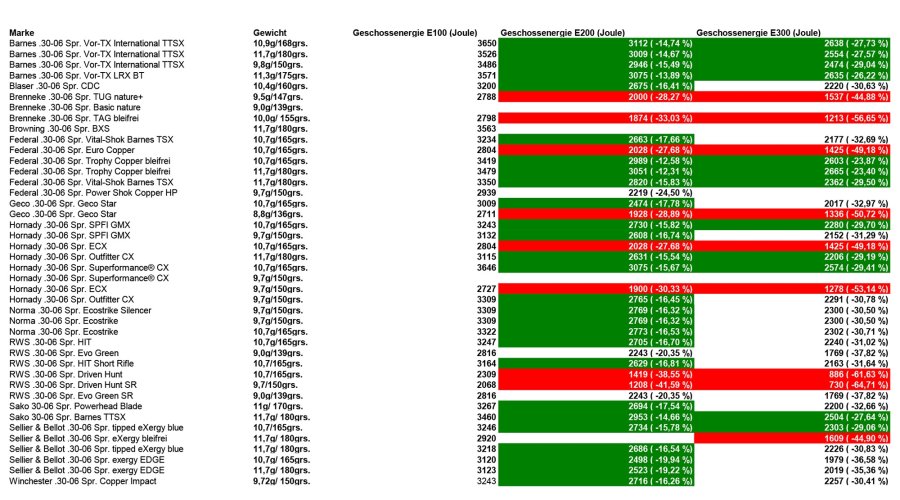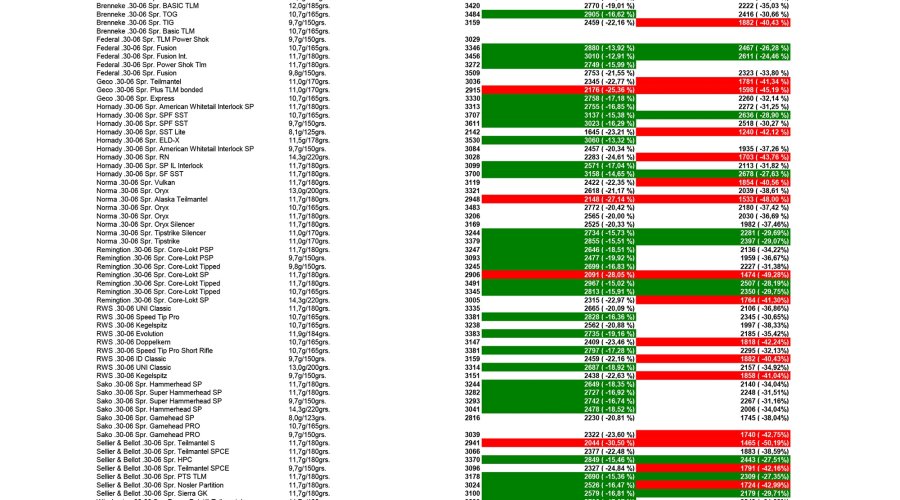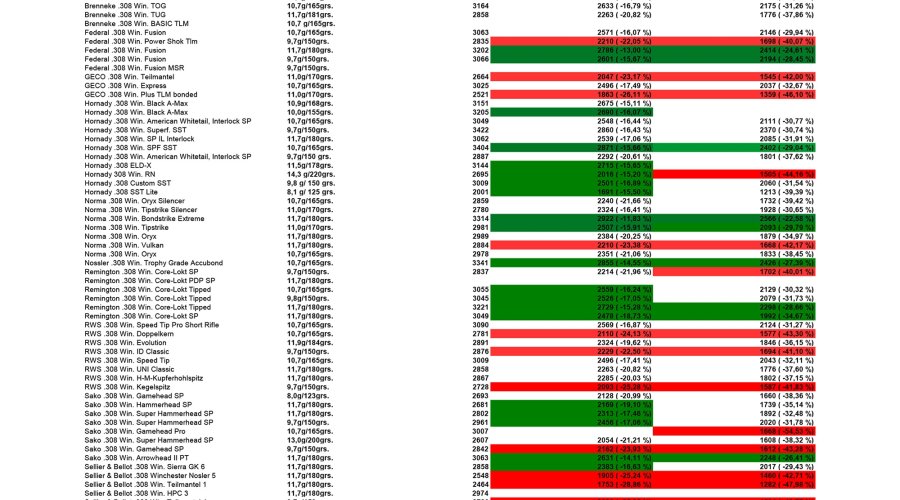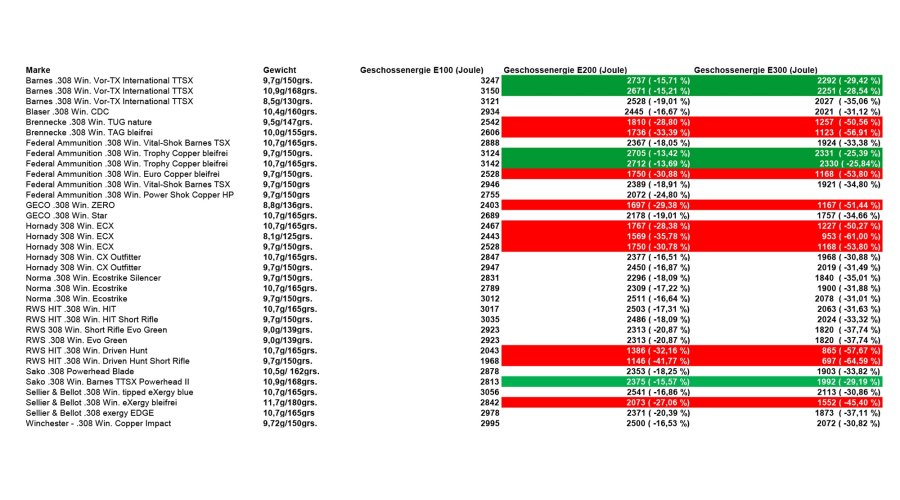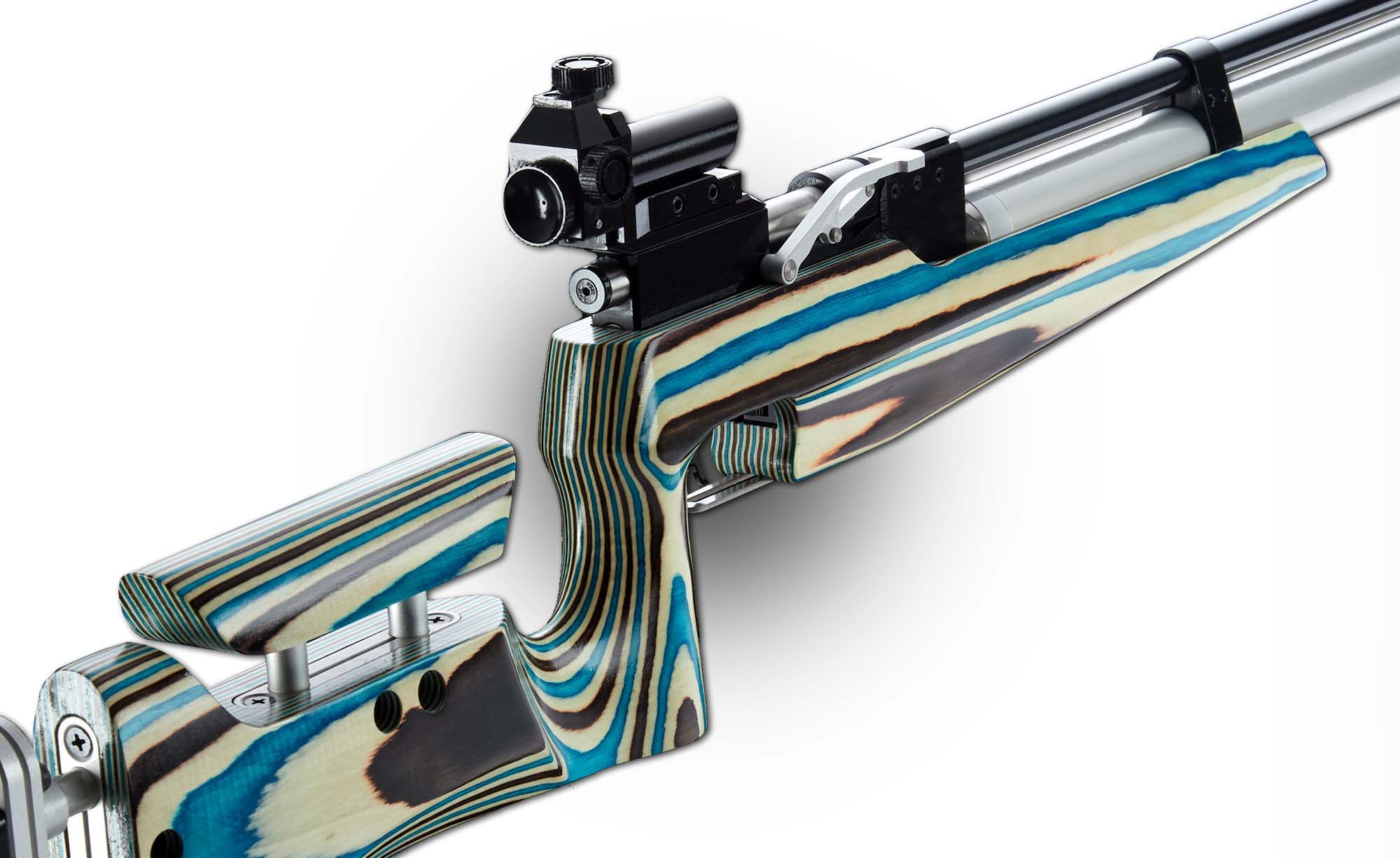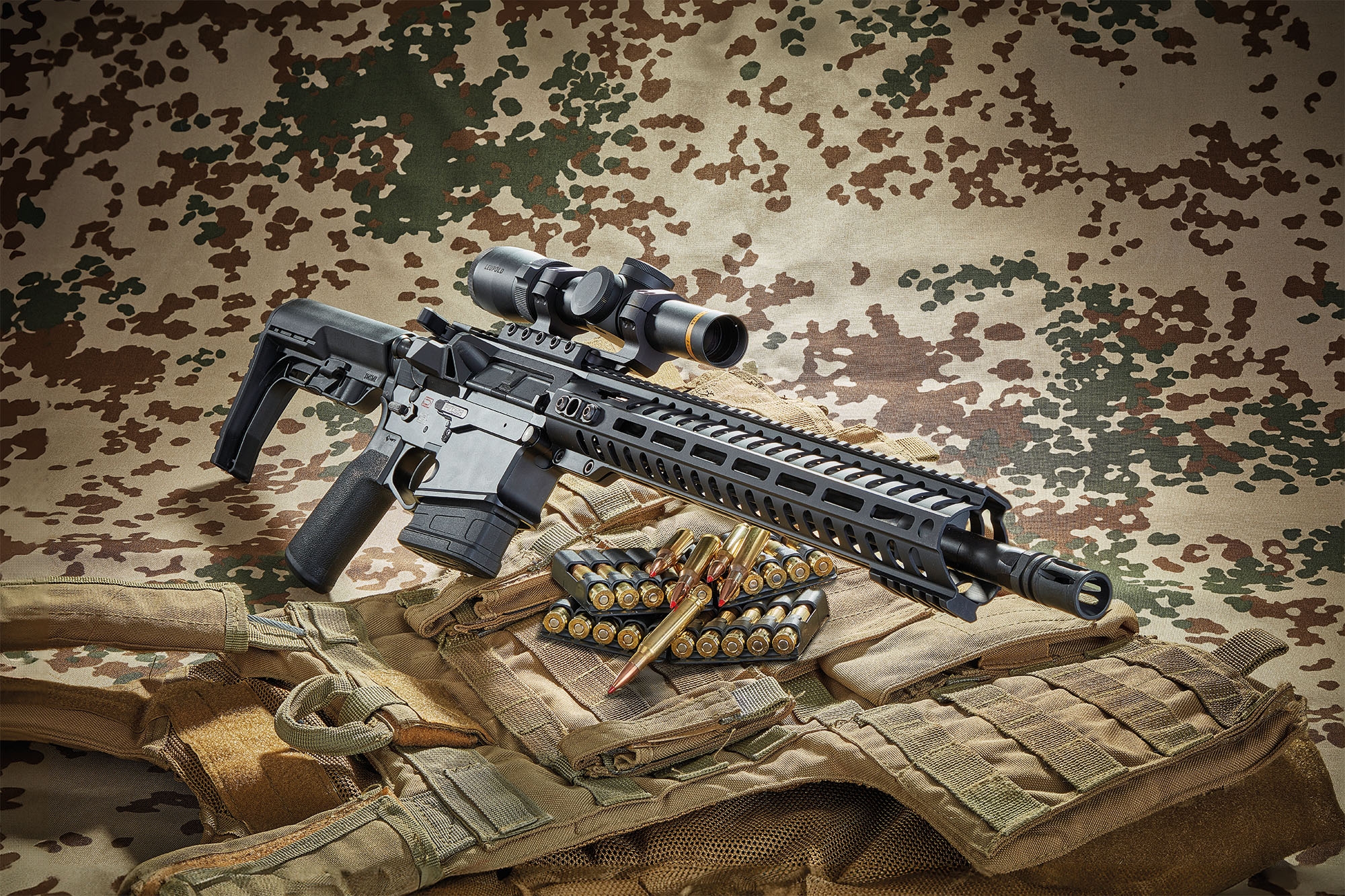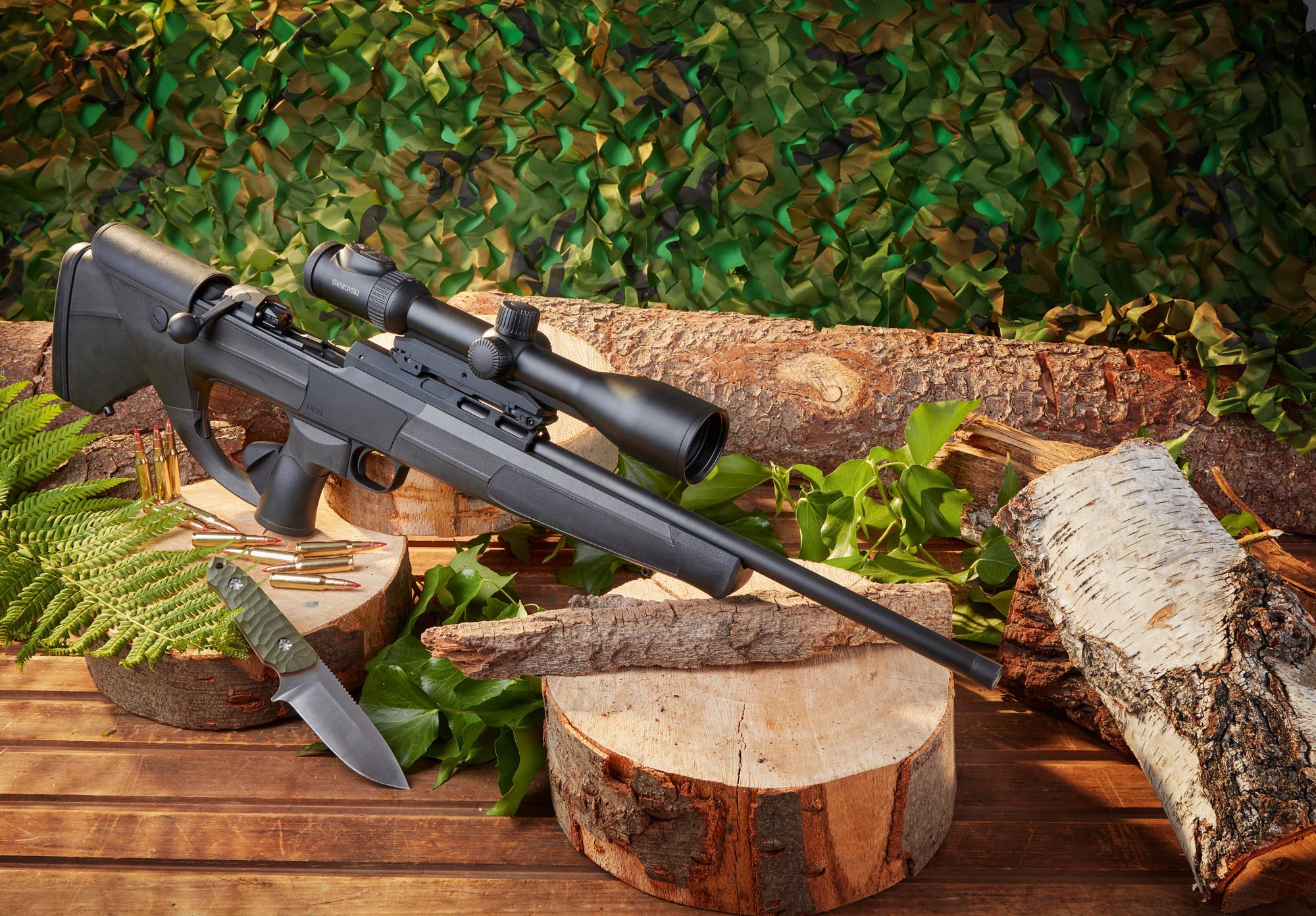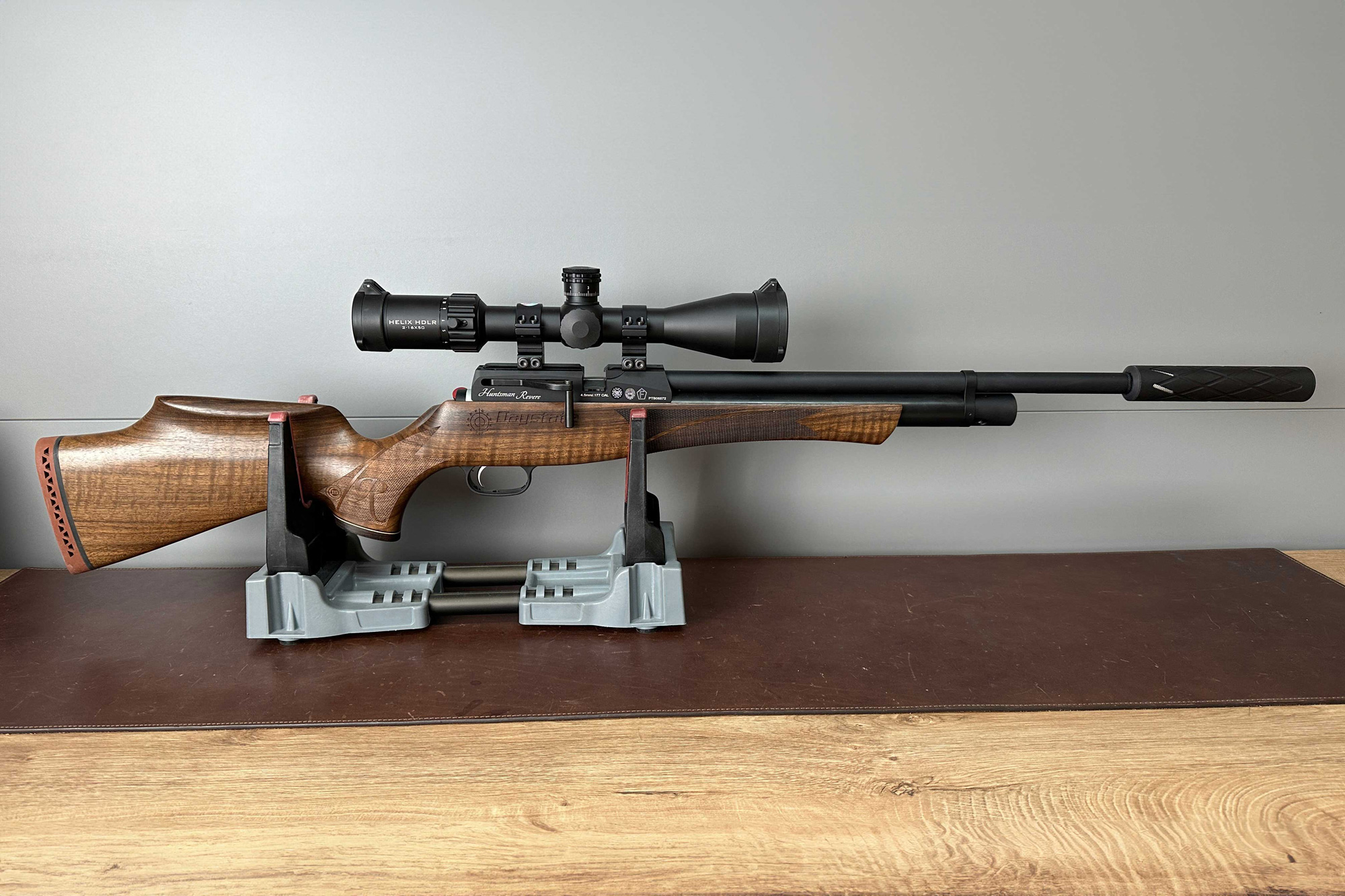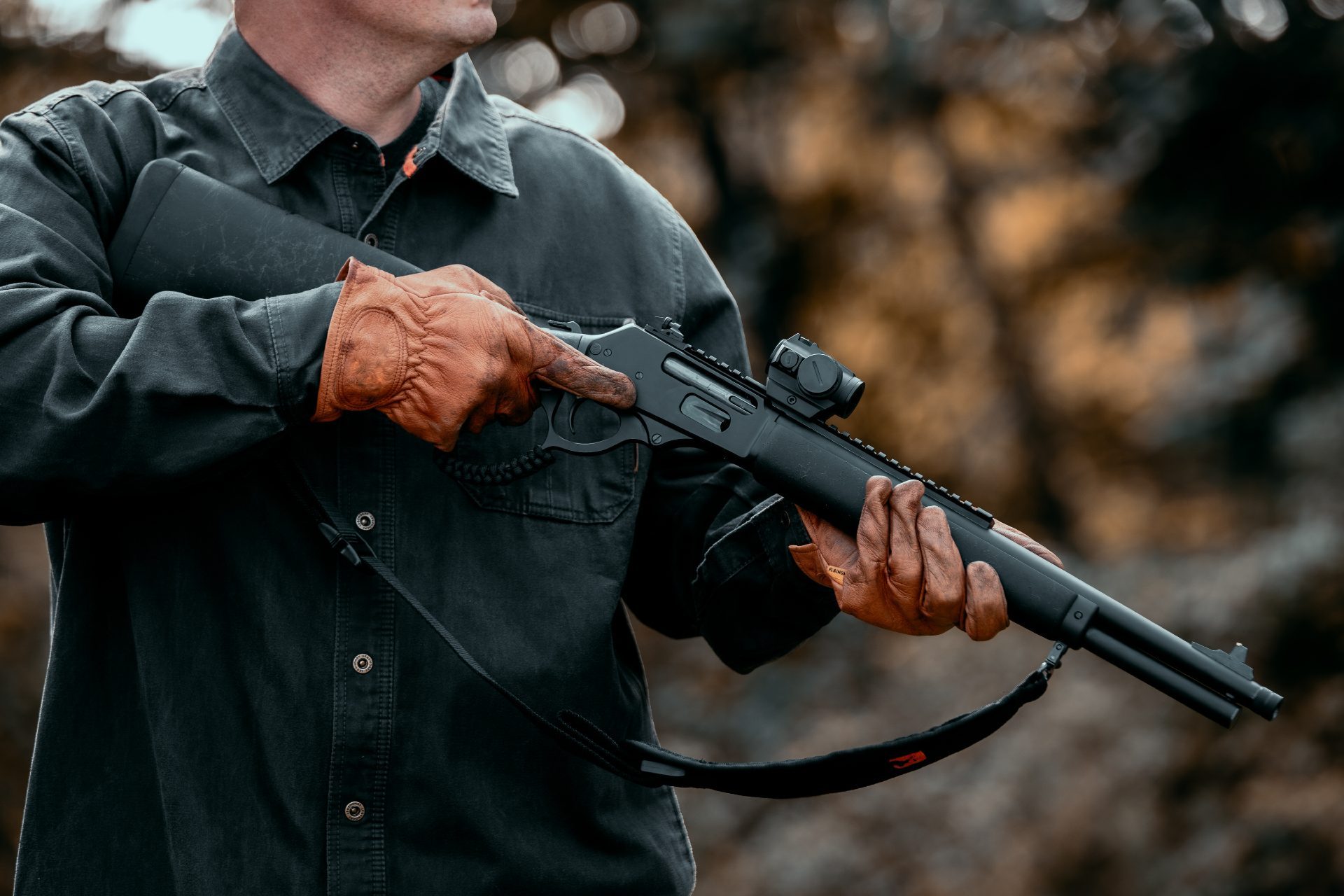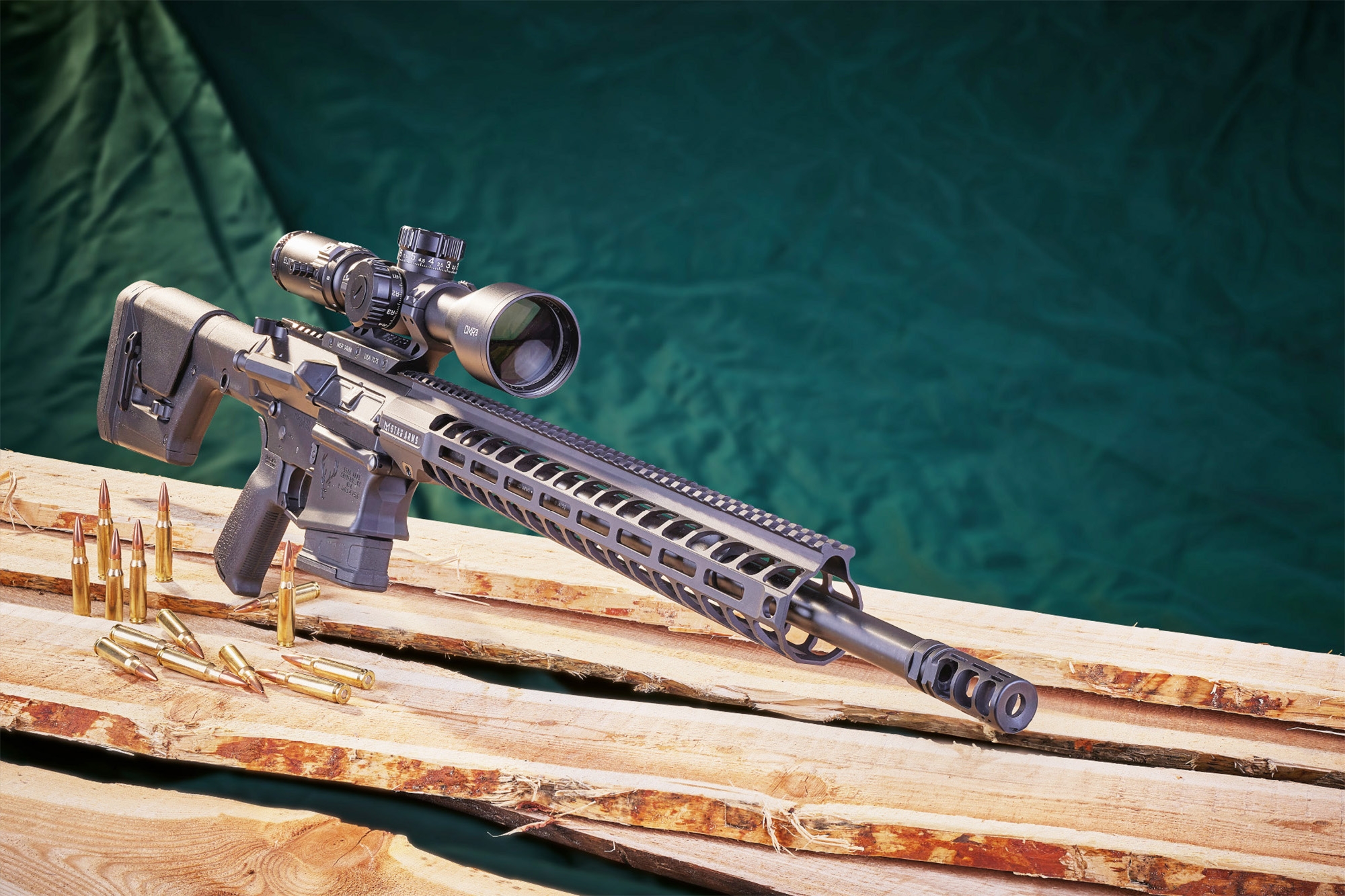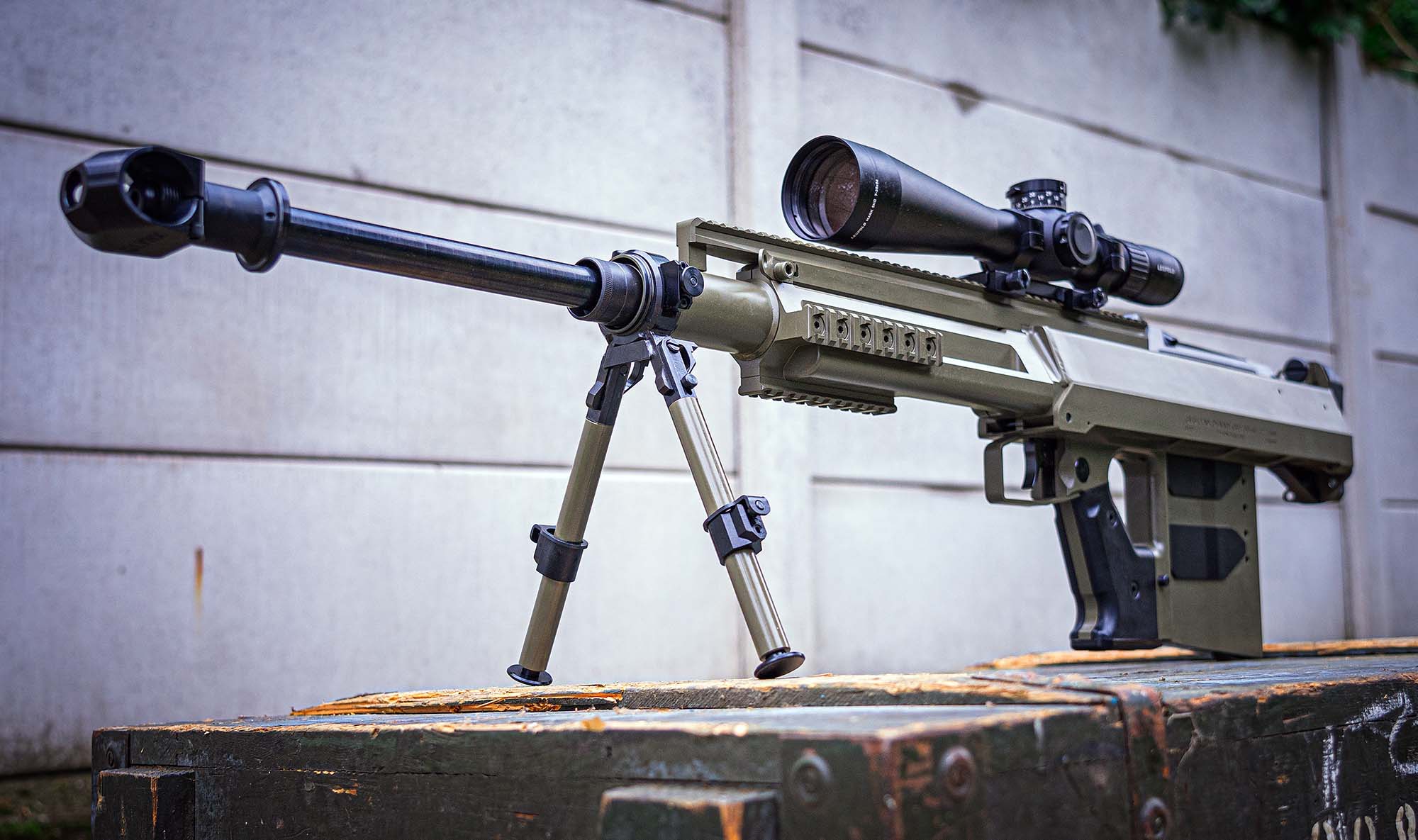A short barrel "increases the chance of a follow up search". This is admittedly far-fetched. However, when dealing with the subject of bullet performance it is often overlooked as an important component in a scenario that leads to a follow-up search. That's why we've compiled 10 points for you to consider to find out if a short barrel always makes sense for hunters. For this very reason, all4hunters/all4shooters.com was invited by the companies Waimex. EP-Arms, and Waffen Mürmann to a firing test on soap blocks. Thereby we wanted to clarify the provocative question: do you really need a short barrel?
We compared .308 and .30-06 calibers and 200 cartridges in terms of ballistic performance on targets
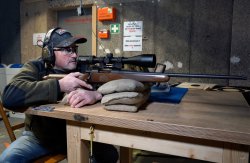
We met Hubert Bodächtel from Waimex in Bavaria. The company is one of the leading wholesalers of hunting and sporting guns in Germany. More and more often, they are organizing events for these two target groups. In this way, hunters and sport shooters can be presented with products live on site that, of course, are also tested. Bullet performance of cartridges is very important for the sales specialists at Waimex, because from their point of view a lot of information is needed. Bodächtel says:
"As a wholesaler, we are not in direct contact with the end customer. Product advice is usually provided by qualified gun dealers. Nevertheless, it is important for us to inform hunters and sport shooters directly. And especially when it comes to "short barrels", there are stumbling blocks that one should be aware of. We are focusing on the killing performance of bullets and possible effects in relation to unwanted follow-up searches. Hunting in a way that protects animals is very close to our hearts. That is why we are doing this bullet test on soap blocks today. We have .308 Winchester and .30-06 Springfield caliber rifles ready for this."
The test rifles – Merkel Helix, Howa 1500 and Mossberg Patriot II
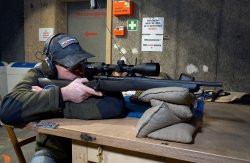
Four gun combinations were tested, all of which have different barrel lengths. A Merkel Helix in .30-06 caliber with a 52-cm barrel, a Mossberg Patriot II with a 37-cm barrel, and two Howa 1500s with barrel lengths of 42 and 54 cm. For ammunition, we used Remington Core-Lokt with 180-gr (11.7-g) heavy bullet in .30-06 Spring. Federal Fusion is used in .308. Both cartridges have 180-gr/11.7-g lead bullets. The Merkel Helix was provided by EP-Arms, the Mossberg Patriot II came from Waffen Mürmann in Wittenberg. Gert Mürmann is a recognized dog handler and often has to fight with "bad" shots on hunts. He says: "On upcoming hunts, we dog handlers usually ask only 3 questions:
1. What was fired at?
2. What type of ammo was used?
3. How far away was the game and in which direction did it go off?
What I personally find time and time again is that many hunters give little thought to bullet performance. If short barrels then come into play, you should add a 4th question, which would read something like this:
4. What is the barrel length of your rifle?
Because not every cartridge is suitable for short barrels. Especially when it goes over 100 meters, the issue of precision and bullet effect plays a major role."
That's exactly how Phillip Engelbreit, the managing director of EP-Arms, sees it. For him, however, another point is very important:
"We manufacture silencers. It's a consumable item. But we can't always say how long a silencer will last either. If short barrels come into play, service life can also be shortened, because different stresses prevail for silencer on short barrels."
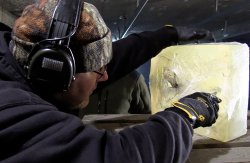
10 questions you should ask yourself if you want to use a short barrel
Question 1: How do I go hunting? A short barrel makes sense for dog handlers and driven hunters. If you are shooting farther than 100 meters, you should consider a standard barrel.
Question 2: What caliber do I want to use? One caliber that makes sense for the short barrel is the .308 Win. The 8x57 caliber is also suitable for this purpose. Other calibers, especially if it goes over 100 meters, are rather "suboptimal" for this purpose.
Question 3: New or old rifle? With old firearms, barrel shortening should be avoided, since the barrel has already seen its best days due to wear.
Question 4: Silencer, "Yes" or "No"? If you use a silencer on a short barrel, you should be aware that the silencers will be subjected to other stresses and the point of impact may change.
Question 5: How do you zero the rifle? Point blank zero at 100 m or 4 cm high? With a short barrel, the Most Recommended Distance (MRD) will change.
Question 6: Do you know the power loss of your ammo? The drop in performance is sometimes enormous in the 100 to 200 meter range. With a short barrel, this is more noticeable than with a rifle with a standard barrel.
Question 7: Do you know the BC value of your bullet? A high value is more optimal, as it still promises enough performance at a given distance. For short barrels, use bullets with a high BC value.
Question 8: Twist. Will my bullet still fly stably at 100 yards? For stability, each caliber needs a certain twist. If the barrel twist no longer fits, for example because a barrel with progressive rifling has been shortened, the bullet may lose stability.
Question 9: How is my grouping at 100 meters? Have I checked the grouping even with a silencer? Always test your short barrel rifle yourself.
Question 10: Lead-free or lead bullet? In view of the fact that more and more hunters will switch to lead-free ammunition in the future, you also have to deal with the issue of bullet minimum impact velocity. Lead-free ammunition usually requires a significantly higher velocity than lead ammo, for example.
An example from our test – Now it gets technical: barrel length and resulting bullet velocity
To our great surprise, we achieved a clean shot right through – a so-called “full-metal jacket effect” - with Federal's .308 at 100 yards. A full jacket effect can lead to a follow-up search because the bullet energy has not been retained in the game body and the shock effect may not be sufficient to be immediately lethal. Suffering is thus sure. All other bullets expanded in the soap block at 100 yards in our test. We have a small calculation for you for the full jacket effect:
from a standard barrel, the 180-grain Federal Fusion has a V0 of 793 m/s according to the manufacturer. In our test, we measured a velocity of 780 m/s from a 54-centimeter barrel and 753 m/s from a 42-centimeter barrel. So, we already lost 1% power with the 54-centimeter barrel and 5% power with the 42-centimeter barrel at the muzzle. According to the manufacturer, fired from a standard barrel at 100 meters our Federal Fusion has a velocity of 739 m/s. Our values were calculated with the 54-centimeter barrel at 722 m/s (minus 3.3% velocity compared to the value from a standard barrel at 100 meters) and with the 42 centimeter barrel variant at 697 m/s (minus 5.7% velocity compared to the value from a standard barrel at 100 meters). With bullet number 3 we just had a shot right through with the calculated 697 m/s. In our test, a loss of about 6% in power and velocity led to a shot right through. Now, a shot right through is not necessarily the reason for a follow-up search. But if you lean back for a moment, close your eyes and then think about the fact that we are only scratching the surface here, and multiplying this test setup by 200 (that's how much bullet data we compared in .308 and .30-06 calibers, lead-free and lead ammo), why there is always that one hunting companion whose game is not lying where it was hit is a question that answers itself. In that case, the cartridge used, barrel length, lead-free or leaded ammo, and target distance do not fit together as well as he/she had assumed at the shooting range. Let's take another example from our Frankonia list in .308 caliber. Our Federal Fusion is, after all, a leaded bullet. If you study our list closely, you will see that this cartridge loses another 13% of power from a standard barrel at 100 and 200 meters, and thus this bullet was one of the best from the Frankonia list in the leaded segment. In contrast, for example, the lead-free bullet of the .308 Win. Brennecke TAG loses about 33% of power in the range from 100 to 200 meters.
So, here the difference is about 20% compared to the leaded bullet. And what must not be forgotten in this context is that lead-free bullets require a higher velocity on the target to achieve the desired effect.
This connection is far too often neglected and makes life difficult for dog handlers like Gert Mürmann. He says:
"The main season for us dog handlers begins in the fall, when the driven hunts start. Most hunts often end after only a few hundred meters. But there are also searches that go on for kilometers and sometimes have to be stopped without success. My longest search was almost 10 kilometers long and you can believe me, the daily planning is 'always' up the spout after such a search. I simply think that if many hunters would deal more intensively with the subject of 'bullet performance', then we would not have to go out so often."
Energy and velocity drop: comparison of over 200 cartridges in .308 Winchester and .30-06 Springfield (leaded and lead-free)
We compiled charts (see above) for you to see the power losses of over 200 cartridges in .308 Win. and .30-06 Spring. calibers. Use cartridges specifically designed for short barrels. As an example, we would like to mention the RWS Short Rifle series. Note on the graphic: in red were marked the cartridges for which the power loss from 100 meters to 200 meters and from 200 meters to 300 meters is particularly great. The data refers to a test barrel with a length of 60 cm. From a short barrel, losses would be even greater. Keep in mind that each bullet, by design and material, also requires a certain minimum velocity of penetration to avoid the full jacket effect as in our described case. The data was kindly provided to us by Frankonia, which lists the individual bullets in detail on their website.
Conclusion on our test with short barrels at 100 meters
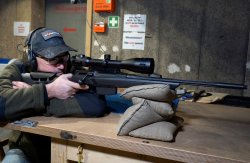
As might be expected, the power losses of the .30-06 Springfield were greater than those of the .308 Winchester. For short barrels, you should go with either the .308 or 8x57 calibers. Beyond a certain barrel length, it no longer makes sense to consider barrel shortening because the likelihood of full jacket effects increases. For shooting distance above 100 meters, you should always include accuracy in your consideration. With a short barrel, the powder in the cartridge you are using will burn differently than with a standard barrel. If you shoot a light bullet which was developed for a standard barrel from a short barrel, there can be considerable deviations in accuracy at 100 meters, which are not conducive to fair hunting.
Our tip at this point: if it has to be a short barrel, check the accuracy of your bullet with and without a silencer at 100, 200 and 300 meters so you can get a realistic idea of the point of impact. As for the performance of bullets at distances over 100 meters, you should know exactly the power loss of your cartridge. Or think about special ammo like the above-mentioned RWS Short Rifle, which compensates for this disadvantage.
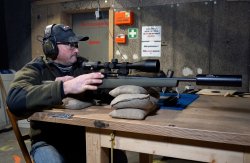
And here is a summary from our protagonists on the subject of short barrels and bullet performance:
Hubert Bodächtel of Waimex says: "Due to the sharp barrel shortening and the associated loss of energy, the .30-06 reaches almost identical velocities as a .308 Winchester right after the muzzle. Relative to 'target velocity', this is a very significant loss of velocity and associated energy needed to achieve the killing effect required for animals' welfare. Already after 100 meters (or 100 yards) the velocity is clearly behind the .308 (which was also fired from shortened barrels). At further distances (which can still be within the hunting range), the energy loss is so great that the bullets are below the minimum impact velocity required for a good effect. This makes it all the more important to know the minimum impact velocity of the bullet you are using!"
Gert Mürmann (dog handler and owner of Waffen Mürmann Wittenberg): "Reducing the barrel length on a .30-06 only makes sense if you use the rifle exclusively at distances under 100 meters. Beyond that, barrel shortening in the .30-06 caliber is rather counterproductive. Anything less than about 55 cm in this caliber already has a significant impact on energy loss."
Phillip Engelbreit, Managing Director of EP-Arms: "With the .308 Win. a barrel shortening up to about 47 cm usually has no major impact on energy. Only below that does this caliber lose velocity and thus energy. This is due to the fact that the burning length (distance from ignition to completely burned powder in the barrel when firing this cartridge) is around 48 cm. Even with a very short barrel of 42 cm, the loss of energy at normal hunting distances is still tolerable, but as we have seen, at 100 meters one must expect a full jacket effect. The risk of a follow-up search even with a well-placed shot increases. The geometric expansions of the channels in soap blocks confirm the measured values and show vividly what happens (or not!) in the game body. In a nutshell, shortening a .30-06 below 52 cm barrel length makes no sense at all. It's only for shooting at very short range. A .308 can actually be shortened to about 47 cm without any problems. Shortening it even more will result in a loss of performance, which is accompanied by a correspondingly shorter operating distance."
Note on the test setup
As always, the data and measurements we have collected were determined under non-scientifically reliable practical conditions and represent only a rough framework for our conclusions. The many influencing factors in ballistics only allow a more accurate statement if these are determined individually with the components used in each case. This report is intended to encourage every hunter to think about what he/she wants to achieve with the barrel shortening and what conditions (caliber, bullet type, BC, bullet weight, powder type and quantity, individual groove-land diameter, actual barrel length,...) prevail in that case.



